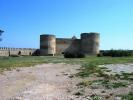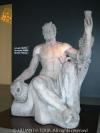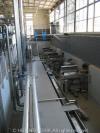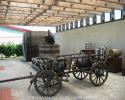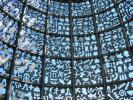City break Lviv Odessa
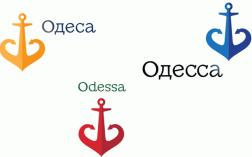
Designation: City break Lviv Odessa
Route: Lviv-Odessa-Lviv
Duration: 6
Price:
Description
Itinerary
Prices and dates
Information
Travel reservation
Places of interest
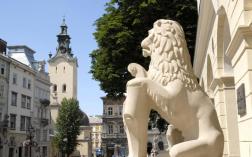
Lviv. Excursion around the city
Interesting and relaxed tour will show you the old town, city center with its attractions among of which you will see magnificent Jesuit church, Market square with unique buildings, Catholic cathedral with the Chapel
of Boim family, Dominican church, Armenian cathedral with Armenian quarter, Opera House, and many
other beautiful and prominent places.

Odessa. Excursion around the city
The city of Odessa is multifaceted and alluring. New modern business centers, elegant boutiques, old houses and apartments with cozy inside courtyards, which sometimes are in need of restoration, all they share nowadays Odessa. However, the Odessa city is still what it was since foundation – a port. You can find beach here, walks on ships along the coast, and many other attractions of the city, which lies on the coast. Due to a guided city tour, you will make acquaintance with this city and its attractions, which create and embellish Odessa.
_s.jpg)
Odessa’s catacombs, length of which is estimated at about 3,000 kilometers, with great probability are the longest in the world. For comparison, the catacombs of Paris have the length of approximately 300 kilometers, and the catacombs of Rome up to 900 kilometers. Millions years ago this area was a sea, and eventually a layer of shelly ground formed here. Later they would use this stone for building forts and for further development of the city of Odessa. Underground passages are of different origin. Some, and most of them are consequences of stones mining, others are called in German “mine”, and are the passages from the basement coming from houses and connected with the underground labyrinth. Especially, when the city was granted the status of Porto Franco, a duty-free port, many smugglers tried to carry their goods outside the port, thus avoiding taxation. Officially, basements of buildings served as storages for wine and food but often they were used as warehouses for storing and transfer for smuggled goods outside the port. Since in most cases stones mining was held illegally and inconsistently, a net of underground tunnels of strangest forms appeared. With the growth of the city, demand for stone has increased. They abandoned used quarries, the new appeared and interconnected and overlapped with the old. So under the city of Odessa and its surroundings a dense net of tunnels and pit pothole mine exist with many entries and exits in all districts of the city.
You can see Odessa’s catacombs in different places.
One of such possibility is an underground museum of Partisan Glory in the village of
Nerubayske, located about 15 kilometers from the center of Odessa. The exhibition, which is located at a depth of 12-14 meters, will show you reproduced conditions of life of a partisan group which numbered about 70 persons in these caves in 1941-1942.
Another possibility is “wild” catacombs in the area of Moldavanka in Odessa, which usually impresses foreign visitors the most.
_s.jpg)
Modern name of the city and fortress does not break connection with the tradition of the past, the city is called “Bilhorod”, means “white city”, this is how this fortress was called
in almost all languages. This fortress of XV century consists of a citadel, inside and oldest fortification, a high wall that separates the garrison military court from public and civil one and outer wall, which had many defensive towers. Directly behind this wall was a deep and wide ditch, which once was filled with water, and significantly complicated an assault on a fortress. If you look from above, then a plan of the fortress looks like a triangle, which consists of ten points and form nine equilateral triangles. Tetractys is a symbol of Pythagorean doctrine. This symbol is also depicted on the wall of the fortress, facing the estuary, and it is clearly visible to ships.The Turks captured Constantinople, but they failed to capture this fortress by storm three times. In 1484, the army of 100 thousand soldiers of sultan Bāyezīd II came up to the walls of the fortress, and then strengthened by 50 thousand soldiers’ army of Tatar khan. As the siege did not give the desired result, the Ottomans decided to take the city by means of bribes. They paid compensation to 1099 families of merchants and resettled them to Constantinople in order to raise the city’s economy. In return, the keys of the city were handed over without a fight, all the other citizens were sold into slavery, and the Ottoman Empire gained control over the Black Sea. The city here has a long history, which reminds us
that in VI century BC the Greek city Tyras existed here. The legend says that roman poet Ovid lived here while being exiled from Rome. One of the towers is now called Ovid’s one. Another legend tells about one of the soldiers, who is believed to be buried here, who participated in the crucifixion of Christ. It is not definitely clear why he was sent to the edge of the Roman Empire. Possibly, he followed Christian doctrine, or there were other reasons.
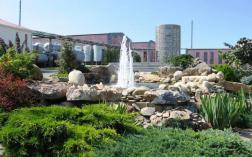
The “lowergardens” (Acha-abag) lie southward of Akkerman fortress. Acha-abag is a name of a village and winery areas given by Turks. Later the Turkish name Acha-abag formed Schabag, which eventually was transformed into Shabo. This name was closer to the pronunciation of Francophone settlers who lived here and grown grapes.
An interesting tour to the center of wine culture of Shabo village is combined with visiting the active wineries, where at the same time the story of this wine region is clearly and vividly revealed and represents Greek тand Turkish period, emigration and living of Swiss colonists winemakers (where in reproduced cottage you can see life of farmers), period of soviet “management” and a new phase of company after the transition to private ownership.
The tour ends in stylishly decorated room where you can try alcoholic beverages from grapes produced at this plant. Wine tasting accompanies story about beverages that you drink, their characteristics and properties, and the reminding of proper and responsible consumption of alcoholic beverages.


0416094008_s.jpg)
_10416094013_s.jpg)
